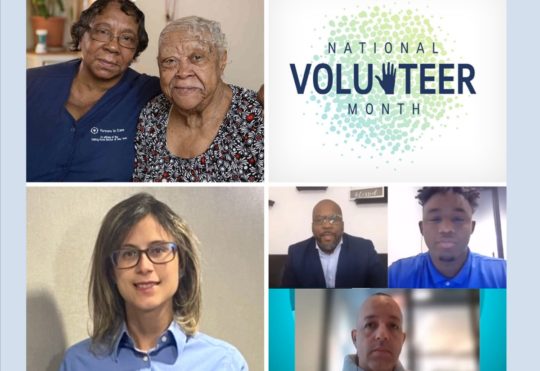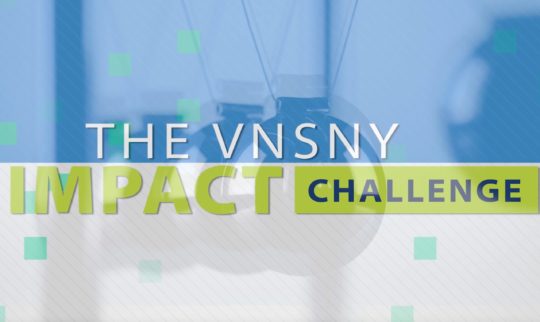An Interview with Dr. Jay Dobkin—Facing the Challenges of COVID-19
 As Chief Medical Officer of VNSNY CHOICE Health Plans, Dr. Jay Dobkin brings four decades of medical experience to our organization. In addition to being an infectious disease specialist and associate professor of clinical medicine at the Columbia University Medical Center, he also served as director of Columbia’s AIDS program from 1988 to 2009. Most recently, he has drawn on his infectious disease expertise to advise VNSNY’s leadership on their response to the COVID-19 crisis. As a key member of VNSNY’s Emergency Response Team, he has provided important insights into the coronavirus and the illness it causes, as well as the challenges that healthcare providers are facing.
As Chief Medical Officer of VNSNY CHOICE Health Plans, Dr. Jay Dobkin brings four decades of medical experience to our organization. In addition to being an infectious disease specialist and associate professor of clinical medicine at the Columbia University Medical Center, he also served as director of Columbia’s AIDS program from 1988 to 2009. Most recently, he has drawn on his infectious disease expertise to advise VNSNY’s leadership on their response to the COVID-19 crisis. As a key member of VNSNY’s Emergency Response Team, he has provided important insights into the coronavirus and the illness it causes, as well as the challenges that healthcare providers are facing.
“We’re incredibly lucky to have Dr. Dobkin as part of our team, especially during this COVID-19 pandemic,” notes Andria Castellanos, EVP and Chief of Provider Services. “His leadership, medical advice and counsel have been invaluable. He is our own Dr. Fauci!”
“Dr. Dobkin has been on the front lines his entire career, and has been a key contributor to ending the AIDS epidemic,” adds Hany Abdelaal, President of VNSNY CHOICE. “As the world battles the novel COVID-19 coronavirus, we are honored to have an infectious disease specialist of his caliber guiding us through this difficult time.”
As an infectious disease specialist, how does the COVID-19 pandemic compare to other epidemics you’ve dealt with?
My 40-year career as a physician started in the 1980s, just when the AIDS crisis was occurring. I’ve been around long enough to see a number of other crises, including drug-resistant tuberculosis and serious flu outbreaks, but there’s been nothing quite like this. The speed with which COVID-19 has spread and the sheer number of cases dwarfs anything the U.S. has experienced since the 1918 influenza pandemic. Also, this is a new organism which has similarities but also obvious differences compared to the other coronaviruses that caused the SARS and MERS outbreaks in recent years. That means that studies need to be done on many levels—and in a hurry—to understand the basic biology of the virus, including how it’s transmitted as well as diagnostic testing, treatment and prevention. I’m confident that major scientific advances will be forthcoming, but the urgency is enormous.
It appears the pandemic is now approaching its peak in the New York area, somewhat earlier than expected. Is this a good thing?
If we’re peaking now, it means we are peaking at a lower number of cases than projected, which is a good thing. The immediate issue is availability of hospital ICU beds and ventilators, and the demand for these seems to be flattening out. Hospital discharge numbers have also gone up recently, so it appears that our hospitals are able to handle the volume at this point. Whether this is a plateau or we’re actually going to see a decline in demand remains a big question—because it’s clear that this level of effort can’t be sustained over a long period without doing tremendous damage to the way our hospitals and other healthcare facilities operate.
How do you see VNSNY’s role in the pandemic?
We have a real crisis on our hands in New York, and VNSNY staff can play a huge role in helping with that crisis. Hospitals need to be able to send people home who don’t need to be hospitalized. A lot of these people will need home care, and that’s what we do.
What has VNSNY done to prepare for this role?
To minimize overall exposure risk to our staff, we’re now doing virtual visits in place of in-home visits whenever possible. We’ve also developed evidence-based protocols for determining what staff should do if they think they may have been exposed to the coronavirus, as well as protocols for the appropriate use of PPE, including specific protocols and Care Kits for treating COVID-19 positive patients. Fortunately, we’ve recently been able to secure additional PPE supplies despite the shortages. But even with proper PPE, nothing is risk-free. People need to balance their responsibility as healthcare workers against the risk of possible exposure to the virus. In the end, it’s an individual judgement everyone has to make.
Because of the PPE shortages, masks are now being re-used. What are the risks in re-using masks?
Re-using masks is not ideal, but we don’t think the risks are major—and re-use has also been officially sanctioned by the relevant regulatory agencies. We’ve developed a protocol for mask re-use to optimize safety. It’s important to remove the mask carefully between patients, fold it in on itself and store it in a sealed paper bag—and to practice hand hygiene before and after removing the mask.
We hear a lot about a vaccine being at least a year away. Are there any other treatments or procedures coming sooner?
I’m confident we’ll have more weapons fairly soon, including much more accessible coronavirus tests as well as antibody testing, which will let us know who has had COVID-19 and therefore may be protected against it. Also, this particular coronavirus appears to be fairly stable genetically. That means it’s probably not going to get less virulent anytime soon, but it also means that any vaccine we develop should retain its effectiveness over time.
Will the coronavirus subside as summer approaches, like the flu?
I don’t think there’s any guarantee that’s going to happen. The flu really does disappear in the warmer weather, but coronaviruses may be different. The MERS outbreak started in Saudi Arabia, for example, so no cold weather was involved in that setting. It would be nice if the COVID-19 virus did subside in warmer weather, because it would buy us more time. But the answer is, we really don’t know yet.

